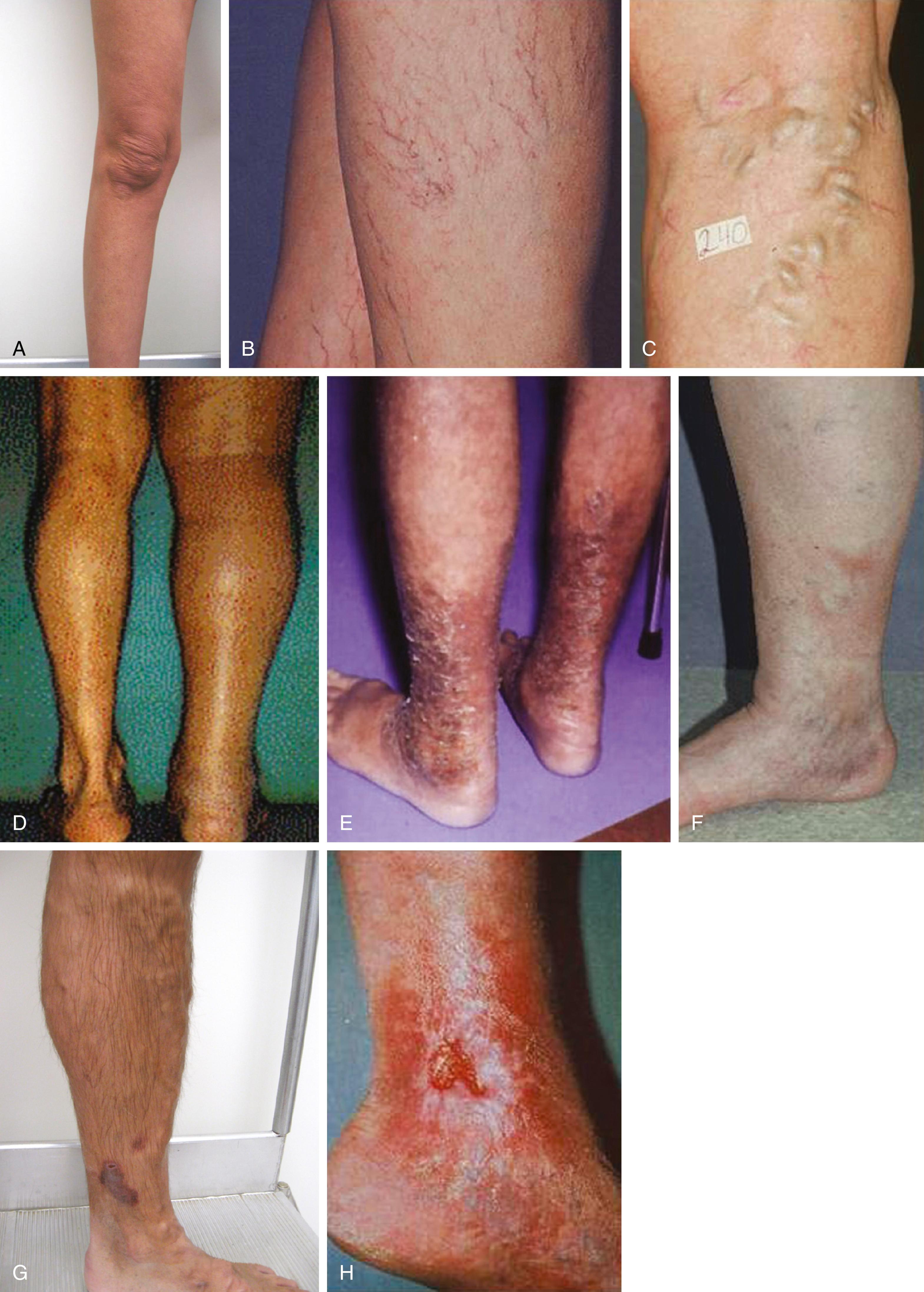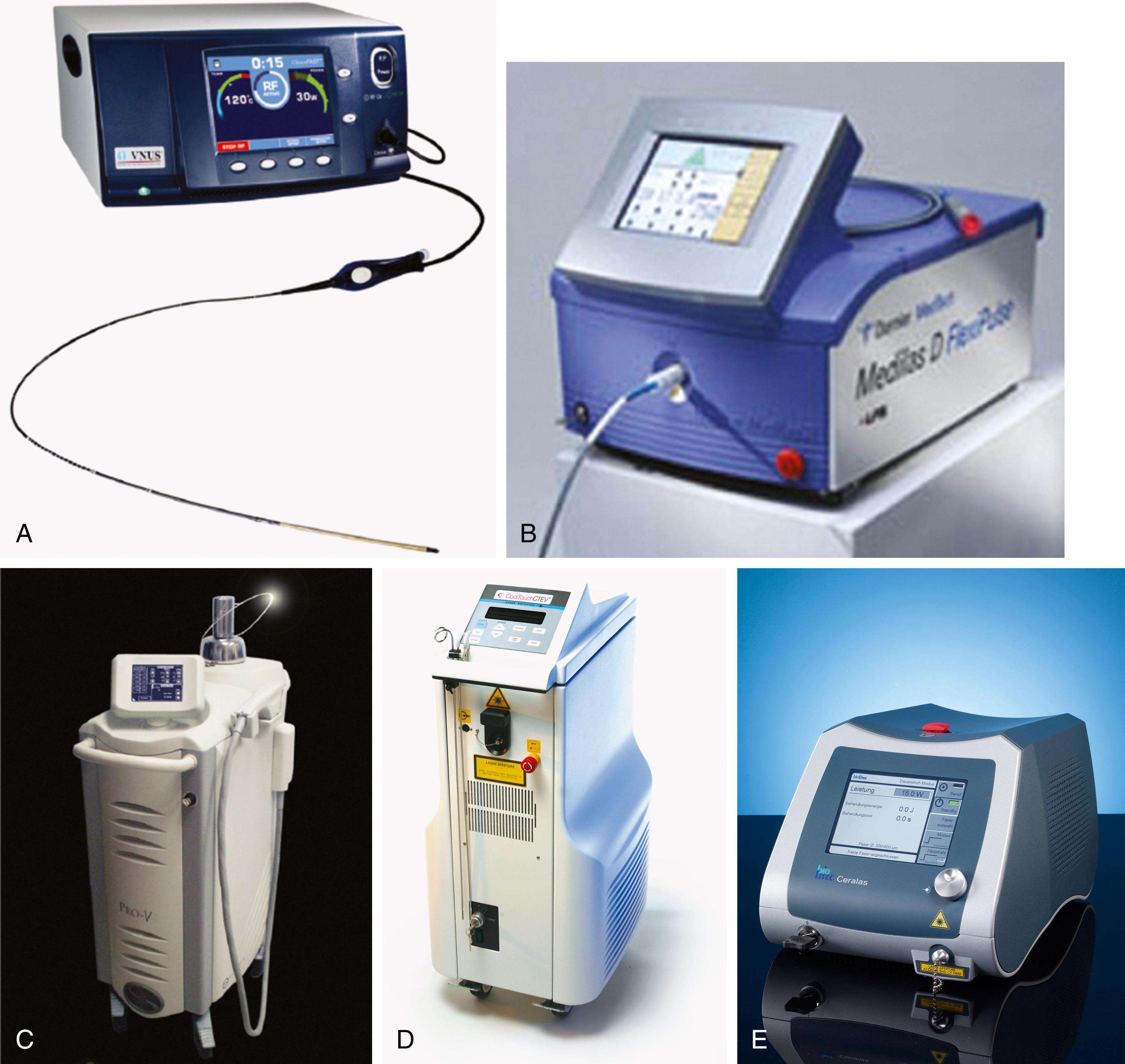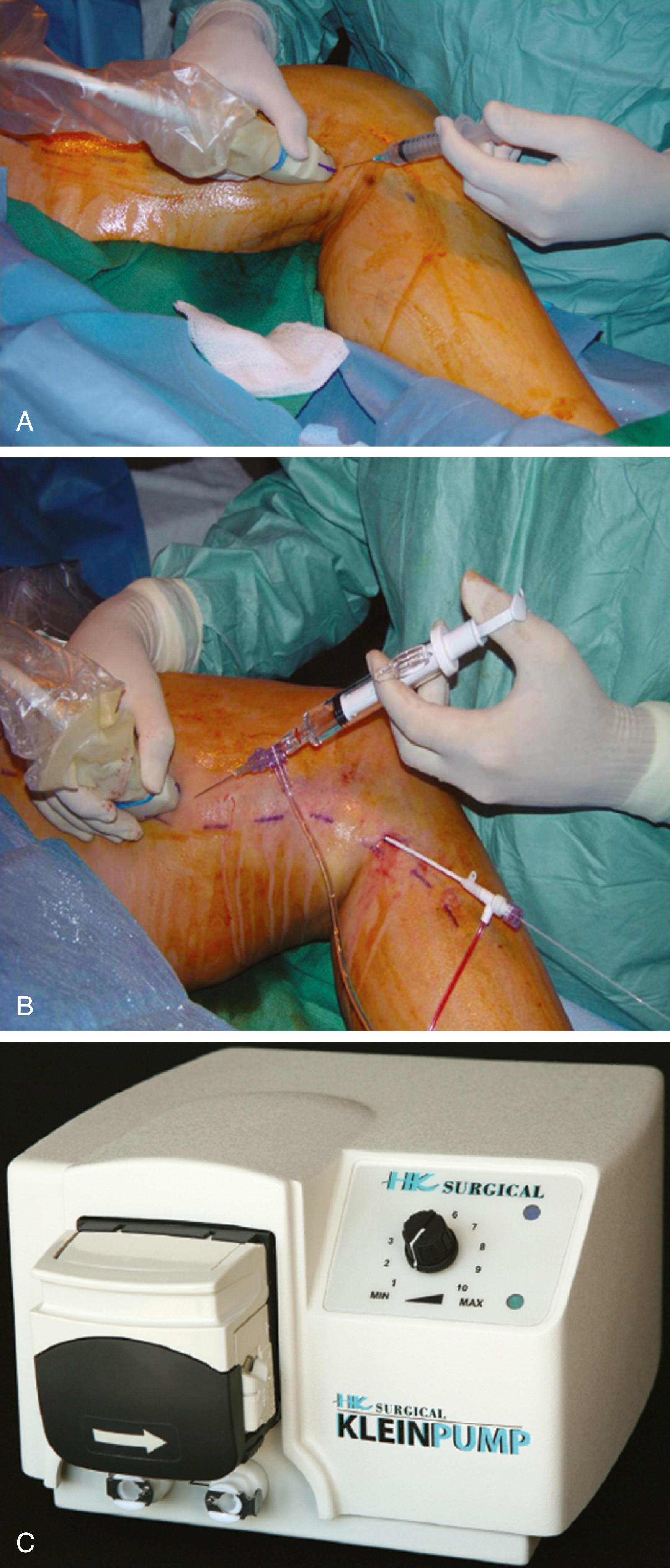Physical Address
304 North Cardinal St.
Dorchester Center, MA 02124
Endovenous treatments for varicose veins emerged as an alternative to open surgery and are now the standard of care due to improved safety and efficacy. , The most widespread technologies used for the treatment of truncal vein reflux are radiofrequency ablation (RFA) and endovenous laser ablation (EVLA). Sclerotherapy remains the treatment of choice for telangiectasias and reticular veins, but may also be used for truncal reflux. Also, the non-thermal non-tumescent (NTNT) technologies have come to market and continue to gain traction. These include chemical ablation, mechanicochemical ablation (MOCA), adhesive closure, and others.
Superficial veins in the lower extremities function as the principal collecting system for the lower extremities. This enables the collection of blood from the superficial tissues and skin, which is then routed to the deep system for return.
The two major veins of the superficial venous system are the great saphenous vein (GSV) and the small saphenous vein (SSV). , True “duplication” of the GSV is rare, and an apparent duplicate GSV is usually an accessory anterior saphenous vein (AASV). , , The AASV is found in up to 14% of patients. , The GSV otherwise has a relatively consistent pattern of tributaries, including the AASV, posterior accessory GSV, posterior thigh circumflex, and anterior thigh circumflex. ,
The SSV originates inferior and posterior to the lateral malleolus and ascends the posterior aspect of the calf between the gastrocnemius heads to the popliteal fossa. In two-thirds of patients, the SSV connects to the popliteal vein at the saphenopopliteal junction (SPJ). In the remaining, the SSV may connect to the GSV using the intersaphenous vein (vein of Giacomini) or may have several termination points through its thigh extension. , , , A discussion of perforating veins can be found in Chapter 158 (Chronic Venous Insufficiency: Treatment of Perforator Vein Incompetence).
Reticular veins are thin-walled venules lying within the superficial compartment with diameters ranging from 1 to 3 mm. , They may communicate with the deep system, perforators, or to the superficial system. They may communicate specifically with the saphenous system and form a network of vessels termed the lateral subdermic venous system (LSVS). The LSVS is located along the lateral aspect of the leg and extends above and below the popliteal area. Ultrasound studies have revealed that the reticular veins of the LSVS may connect to telangiectasias in up to 88% of patients.
Telangiectasias differ from reticular veins in both size and appearance. Telangiectasias are defined as dilated venules, capillaries, or arterioles 0.1 to 1.0 mm in diameter. , The color of a telangiectasia depends on the origin of the vessel. Telangiectasias that arise from the arterial side of the capillary loop are flat and red, whereas those from the venous side are raised and blue. These veins often appear in the thigh near the LSVS. Reticular veins may serve as “feeder” veins to telangiectasias.
Most clinicians have adopted the Clinical, Etiologic, Anatomic, Pathophysiologic (CEAP) system to classify the physical findings associated with chronic venous insufficiency, and the classification was recently revised ( Table 155.1 ). Representative images for the Clinical class may be seen in Figure 155.1 (see also Ch. 156 , Postthrombotic Syndrome: Natural History, Pathophysiology, and Etiology). Any patient in whom an endovenous procedure is contemplated should be evaluated in terms of this classification. Photographs of the target veins should be taken to document the clinical score and to compare the pre- and post-procedural results.
| C class∗ | Description |
|---|---|
| C 0 | No visible or palpable signs of venous disease |
| C 1 | Telangiectasias or reticular veins |
| C 2 | Varicose veins |
| C 2r | Recurrent varicose veins |
| C 3 | Edema |
| C 4 | Changes in skin and subcutaneous tissue secondary to chronic venous disease |
| C 4a | Pigmentation or eczema |
| C 4b | Lipodermatosclerosis or atrophie blanche |
| C 4c | Corona phlebectatica |
| C 5 | Healed venous ulcer |
| C 6 | Active venous ulcer |
| C 6r | Recurrent active venous ulcer |
| E class | Description |
|---|---|
| E p | Primary |
| E s | Secondary |
| E si | Secondary – intravenous |
| E se | Secondary – extravenous |
| E c | Congenital |
| E n | No cause identified |
| A class | Description |
|---|---|
| A s | Superficial |
| A d | Deep |
| A p | Perforator |
| A n | No venous anatomic location identified |
| P class | Description |
|---|---|
| P r | Reflux |
| P o | Obstruction |
| P r,o | Reflux and obstruction |
| P n | No pathophysiology identified |

Patient-reported outcomes (PROs) are becoming central to evaluating venous pathology and its meaningful effects on patient quality of life. Scoring systems include the Venous Clinical Severity Score (VCSS), Varicose Veins Symptoms Questionnaire (VVSymQ), Aberdeen Varicose Vein Questionnaire (AVVQ), Chronic Venous Insufficiency Quality of Life Questionnaire (CIVIQ), and others. Patients undergoing endovenous procedures may benefit from the concomitant evaluation of physician- and patient-reported outcomes.
Duplex ultrasonography (DUS) of the lower extremities is the standard for evaluating and diagnosing superficial venous insufficiency. Complete evaluation includes assessment of both reflux and obstruction in the deep, superficial, perforating, and tributary veins. A more complete description of the technique can be found in Chapters 20 , Clinical Evaluation of the Venous and Lymphatic Systems and 25 , Vascular Laboratory: Venous Duplex Scanning. The goals of ultrasound are to identify and map the superficial or perforator veins to be treated, and to assess for hemodynamically significant reflux. The deep system should also be interrogated given the potential for altering patient management as the collective experience grows with the treatment of deep venous disease.
The goals of treating superficial venous insufficiency may range from alleviating symptoms, healing wounds, preventing progression, preventing recurrence, and improving cosmesis. The randomized controlled trial by Gohel et al. comparing early versus deferred endovenous ablation in patients with venous ulceration (EVRA) demonstrated an improvement in time to wound healing, increased ulcer-free time and was cost-effective. Generally speaking, the most central point of reflux should be treated first. In the majority of patients this is the saphenofemoral junction (SFJ) or saphenopopliteal junction (SPJ). Wong et al. evaluated 239 limbs with primary reflux and 225 limbs with recurrent reflux, and they found SFJ incompetence in 53% and 69% of limbs, respectively. In the same patient cohort they found SPJ incompetence in 21% and 25% of limbs, respectively. Guex et al. found that 85% of limbs showed reflux in the GSV and 20% in the SSV.
Patients with saphenous reflux frequently also exhibit varicosities, enlarged reticular veins, or telangiectasias. There is debate as to whether adjunctive procedures to treat these varicosities and telangiectasias should be performed simultaneously with saphenous treatment, or in a staged fashion. One study in which patients were simultaneously treated with EVLA and ambulatory phlebectomy found that 94% did not have to return for additional ambulatory phlebectomy procedures. Conversely, in a study of 181 patients who underwent isolated RFA of the GSV, only 25% were able to avoid additional treatment with ambulatory phlebectomy. Larger analyses, including systematic reviews and registries, corroborate the findings. In a review of 3375 limbs from the Vascular Quality Initiative (VQI) Varicose Vein Registry, Brown et al. demonstrated improvements in all C2 patients undergoing combined versus staged therapies, but with a significant relative improvement in VCSS for patients undergoing combined treatments. A systematic review and meta-analysis by Aherne et al. that included 6915 limbs demonstrated clinical equipoise for both strategies with an improvement in early disease severity and quality of life scores in the combined treatment group.
The Society for Vascular Surgery (SVS) and the American Venous Forum (AVF) have compiled evidence-based recommendations for the care of patients with chronic venous disease. Both EVLA and RFA are considered safe and effective and are considered first-line therapy for the treatment of symptomatic saphenous reflux. Both modalities are recommended in preference to open surgery because of a reduced convalescence time and a decreased incidence in postprocedural morbidity. EVLA and RFA are also recommended in preference to foam sclerotherapy because of improved efficacy and durability. Liquid or foam sclerotherapy is recommended for the treatment of telangiectasias, reticular veins, and varicose veins. Guidelines for choosing the appropriate endovenous intervention are listed in Table 155.2 .
| Type of Treatment | Vessels Treated |
|---|---|
| Radiofrequency ablation | Saphenous vein trunks |
| Perforators | |
| Endovenous laser ablation | Saphenous vein trunks |
| Perforators | |
| Chemical ablation | Saphenous vein trunks |
| Saphenous vein tributaries | |
| Perforators | |
| Varicose veins not connected to saphenous vein trunks | |
| Mechanicochemical ablation | Saphenous vein trunks |
| Adhesive closure | Saphenous vein trunks |
| Visual or surface sclerotherapy | Varicose veins |
| Reticular veins | |
| Telangiectasias |
RFA is a minimally invasive technology that provides efficacious treatment of superficial venous reflux with minimal post-procedural sequelae typically performed in an outpatient setting. The most commonly used RFA technology uses the “segmental ablation” method employed by the ClosureFast (Medtronic, Minneapolis, MN) procedure ( Fig. 155.2 ). The ClosureFast catheter is constructed such that it makes direct contact with the vein wall to deliver radiofrequency energy, and it ablates at 7-cm intervals. This results in destruction of the endothelium, contraction of vein wall collagen, and thrombus formation. Eventually, fibrosis occurs within the vein, which further constricts its lumen, resulting in a durable ablation. Another recently approved radiofrequency device is Venclose (Venclose, San Jose, CA), which functions on the same principles using a similar “segmental ablation” method but with different lengths of treatment (2.5-cm and 10-cm intervals).

Contraindications to the use of RFA include superficial venous thrombosis (SVT), deep venous thrombosis (DVT), venous aneurysm, and an ankle–brachial index of less than 0.9. Although the presence of a pacemaker is not a strict contraindication, pre-procedural evaluation by the patient’s cardiologist should be considered.
On the day of the RFA procedure, the patient should be well hydrated to achieve maximal distention of the leg veins. Venodilation can be further enhanced by warming of the ultrasound gel and keeping the patient warm in the procedure room. Duplex ultrasonography may be performed prior to the procedure to mark the skin overlying the target treatment vein.
For ablation of the GSV, the general teaching is to ablate the lowest point of reflux. For C2 or C3 disease, access is initiated no more than a hand’s breadth (∼10 cm) below the popliteal fossa. Should there be evidence of tissue damage (i.e., C4a/b, C5, C6 disease), consideration may be given to ablating further peripherally, taking care to separate the saphenous or sural nerve from the adjacent vein using tumescent anesthesia. To minimize the risk of thermal injury, treatment may be performed where the vein is deep to the saphenous fascia or 1 cm below the skin. With the patient in the reverse Trendelenburg position, lidocaine is administered at the selected site, and a 21-gauge needle is used to gain access under ultrasound guidance. A 0.018-inch guide wire is inserted into the GSV, and the needle is removed. The selected sheath is advanced over the wire, the 0.018-inch wire is removed, and the RFA catheter is inserted. The catheter is advanced to the point where treatment will begin. If it does not advance easily, a 0.025-inch guide wire may be back-loaded into the device to assist passage. Optimal positioning of the catheter tip is 2 to 2.5 cm distal to the SFJ, which is thought to reduce the risk of endothermal heat-induced thrombosis (EHIT), which refers to the extension of thrombus into the common femoral vein. ,
Once tip placement is confirmed by ultrasound, perivenous tumescent anesthesia is administered under ultrasound guidance along the entire treatment length of the GSV. Tumescent anesthesia serves not only as an anesthetic but also apposes the vein to the catheter and protects the surrounding tissues and skin from thermal damage. , Enough fluid should be instilled to create a 10-mm diameter around the vein ( Fig. 155.3 ). A typical tumescent mixture includes 50 mL of 1% lidocaine with epinephrine in 450 mL of normal saline neutralized with 5 to 10 mL of 8.4% sodium bicarbonate. The safe limit for tumescent lidocaine administration has been described as 35 mg per kg body weight.

Many physicians use a pump system with a 22-gauge hypodermic needle to deliver the tumescent anesthesia because it decreases the time needed for administration as well as the number of needle punctures. Ideal needle positioning is within the saphenous compartment. After administration, the patient should be placed in the Trendelenburg position to assist in vein collapse, apposition, and exsanguination. Following treatment completion, the sheath and catheter are withdrawn.
During the procedure, compression over the treated vein and catheter with the ultrasound transducer in a longitudinal position improves vein wall apposition and technical success. With the segmental ablation technique of the ClosureFAST system, each 7-cm segment of vein is treated independently for a 20-second interval. The initial treatment segment 2 to 2.5 cm peripheral to the SFJ requires two 20-second cycles to ensure successful ablation. Aneurysmal or large-diameter segments may be treated twice at the user’s discretion, with a maximum of three treatment cycles. For each 20-second cycle, the temperature must reach 120°C within 5 seconds. The generator monitors all parameters during the treatment cycle and alerts the user if the parameters are not successfully met. After treatment, duplex ultrasonography is utilized to assess the treated vein for ablation, absence of reflux, and DVT.
Postoperative compression with graduated compression stockings (i.e. 20–30 or 30–40 mm Hg) or a multilayer compression dressing is recommended for at least 1 week. , , Although commonly used as post-procedural care, the mandatory use of compression has come into question. The data have not shown a difference in patient-reported outcomes between patients who wear compression and those who do not, except possible transient improvement in patients undergoing concomitant microphlebectomy. Patients are instructed to ambulate post-procedure. A duplex ultrasound follow-up examination is advised at 72 hours to 1 week to assess for EHIT and ablation of the treated vein(s). Further follow-up evaluations are performed according to physician preference. The American Venous Forum and Society for Vascular Surgery have compiled a set of guidelines for the diagnosis, management, prevention and surveillance for EHIT.
Become a Clinical Tree membership for Full access and enjoy Unlimited articles
If you are a member. Log in here